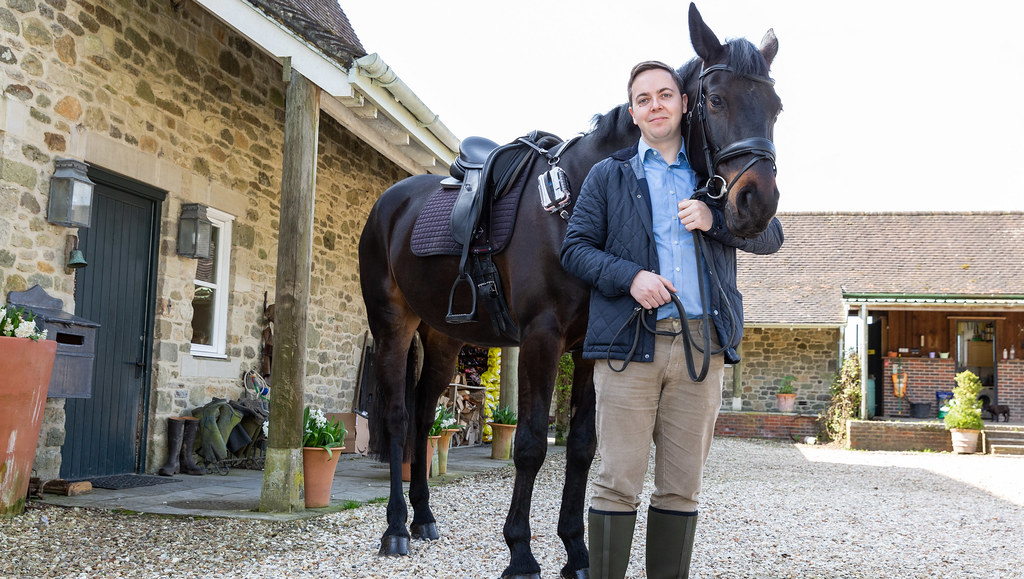A researcher at the University of Bath has developed an innovative sensor platform for horses that can provide accurate and reliable monitoring across a range of a physiological measurements.
Following the death of seven horses at last year’s Cheltenham Festival, the welfare of racing horses was one of the major talking points at this year’s event. The focus on the wellbeing of horses has continued ahead of next week’s Grand National Festival with the British Horse Racing Authority (BHA) announcing all runners will undergo pre-race examinations.
Proving real-time measurements of horse health
The EquiVi platform is a non-invasive wearable device – similar to a fitness and activity tracker used by humans – that can provide real-time measurement of a horse’s vital signs, including cardiovascular health.
The ability to monitor these vital signs over long periods of time and during exercise is a feat yet to be successfully accomplished in the equine industry and could potentially bring significant benefits to training horses both in terms of enhancing performance, reducing risk of injury and improving welfare through the early detection of disease.
Metrics such as heart rate, respiratory rate, blood oxygen saturation, temperature, blood pressure and heart rate variability can be simultaneously tracked and provide immediate and accessible data to owners, trainers veterinarians, and other stakeholders during all aspects of a horse’s day-to-day activity including stabling, exercise, travel, and veterinary in-patient monitoring.
The device, currently in early prototype form, is made up of three sensors positioned on different parts of the horse namely the Cannon; an area of thin skin such as over the transverse facial artery between the eye and the ear; and bottom of the neck.
Tracking vital signs to improve horse welfare
The sensors responsible for measuring heart rate are novel in their design and reduce the need for conductive gel, hair removal and adhesive contact pads. The sensor’s electrodes contain an array of sprung pins that are designed to conform to the morphology of the skin, making them non-invasive and not at all painful.
All electronics will be embedded into a wearable package designed to fit in either a modified girth or head collar, and data will be transmitted via a wireless link to a tablet device.
This data will enable detailed profiles to be created for individual horses and uniquely is designed to operate effectively during movement and exercise, with particular emphasis on the application to ambulatory racehorses.
From recreational fitness to elite level sports training, there is an abundance of devices and technologies capable of monitoring a human’s vitals during training and even competing. However, such technology is not current available for horses, nor is information gathered in this accurate and real time manner in the horse racing industry.
Technology currently exists that can monitor the different aspects of a horse’s health using sensors, but there has been very little clinical validation and the sensors typically do not work while the animal is moving. Current technology is mostly designed for qualitative feedback to owners, and does not provide clinically relevant metrics to professional stakeholders and veterinary professionals. This device will make it possible to continually monitor a horse’s numerous vital signs, improving early diagnosis of any illness or disease and ultimately help to prevent unnecessary fatalities.
Alongside applications in monitoring a horse’s health and wellbeing, this device provides race horse trainers with the ability to observe the relationships between a race horse’s performance and cardiovascular activity. It is commonly known atrial fibrillation and premature systoles are common causes for a horse’s poor performance. This continuous monitoring will enable tracking of these vital signs during and after training, helping trainers to suitably tailor their programmes and treatment of those horses who may become distressed or ataxic immediately post exercise.
The ‘EquiVi: Continuous Health Monitoring in Ambulatory Horses’ project brings together the UK’s largest research centre for bioelectronics – C3Bio-Bath at the University of Bath – and the UK’s leading school of veterinary studies, the Royal (Dick) School of Veterinary Studies in Edinburgh.
Dr Ben Metcalfe, lead researcher and Lecturer in the University of Bath’s Department of Electronic Engineering, said: “I have grown up riding and caring for horses since I was a young boy and their welfare and wellbeing is something that really matters to me.
“Horses are complex living organisms and their health, wellbeing, and performance on the racetrack are all of significant interest to a wide range of stakeholders.
“The development of clinically validated sensors that can provide real-time data from ambulatory animals to owners, trainers, and veterinarians represents a major step forwards and has the potential to drastically improve the wellbeing of the animals.”
Dr John Keen, clinical equine cardiologist and RCVS and European Specialist in Equine Internal Medicine at the Royal (Dick) School of Veterinary Studies, commented: “We are very excited to be working with the University of Bath developing innovative and robust wearable health monitoring devices, specifically designed for horses. We can see fantastic potential for these as an aid in fitness programmes, for the early and accurate detection of diseases and for minimally intrusive monitoring of sick horses.”
Lucy Nelson, Deputy Lieutenant of Somerset & Owner of Forest Lodge Stud, commented: “I’m really excited about this technology being developed at the University of Bath. This is a fantastic tool and could truly be revolutionary.
“We spend our lives trying to look at horses and understand their language so we can effectively communicate, train and care for them. This type of technology is vital in ensuring everyone in the equine community – from racehorse owners to veterinary professionals to trainers and jockeys – are able to accurately monitor the wellbeing of their animals in an area where there is so much room for improvement.”
In the future, Dr Metcalfe is hopeful this will device will be further developed and commercialised, providing the horse racing industry and veterinary professionals with an accurate, clinically proven device for the real time monitoring of ambulatory horses.

